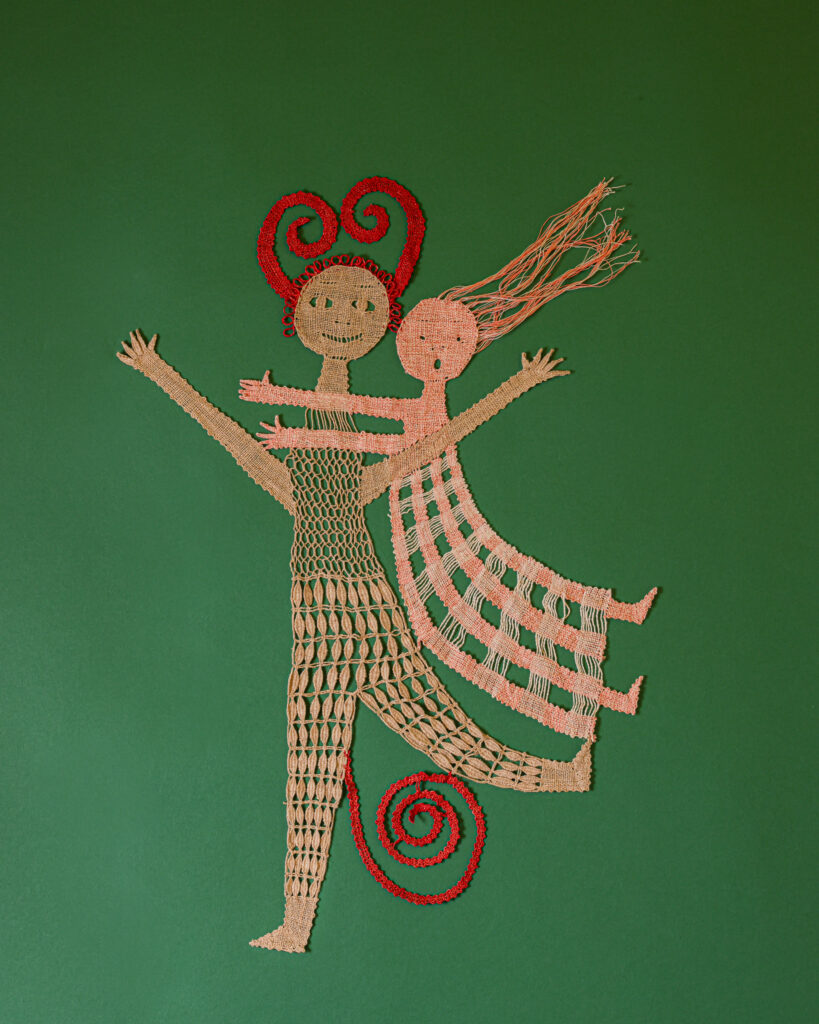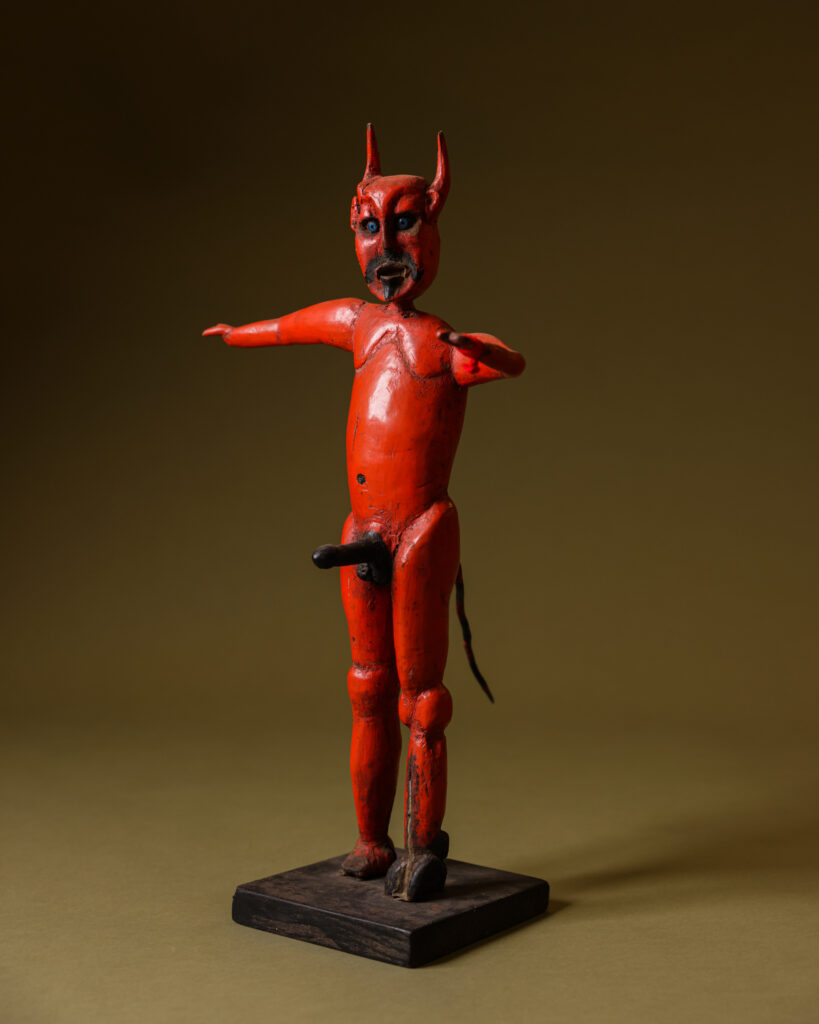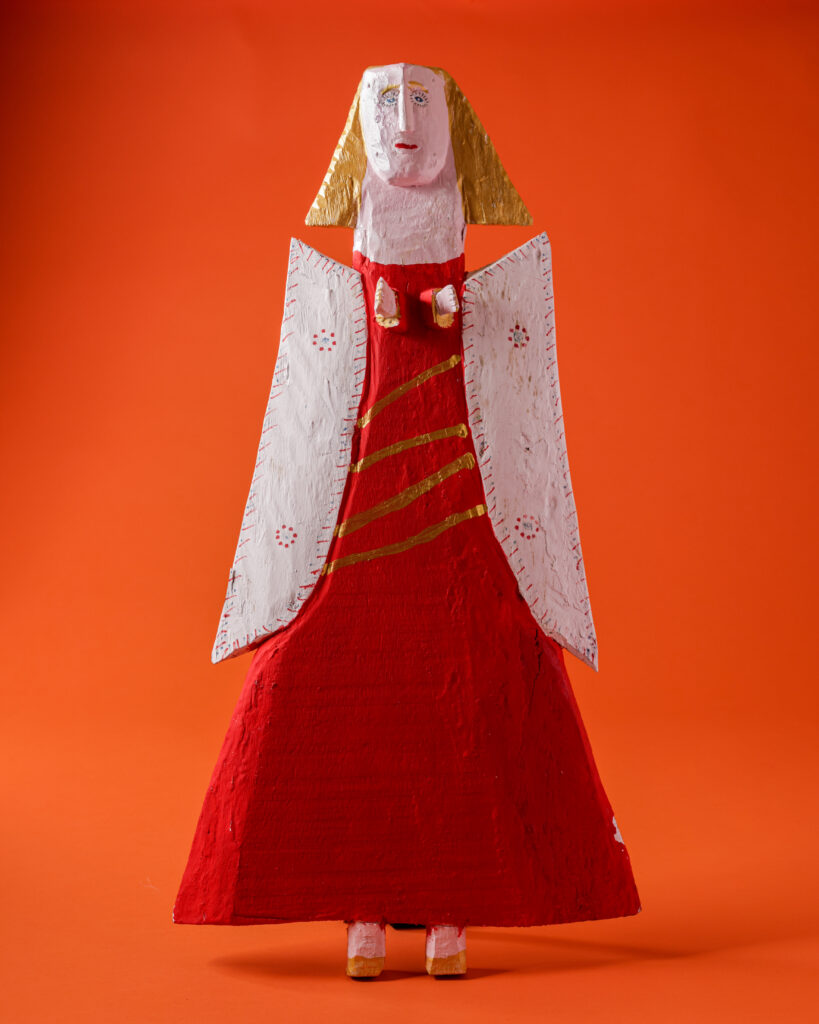Angels and demons dwell peacefully together in the storage vaults of the Museum of International Folk Art. Decades of curators keep them safe for future generations. What can we learn from this cohabitation of seeming opposites?
The Museum of International Folk Art
Founded in 1953, the MOIFA holds more than 160,000 objects. Legendary 20th century designer Alexander Girard and his wife, Susan, gifted over 106,000 of these to the institution. This donation made it the largest collection of international folk art in the world.
Angels and Demons Vaults of Art
Ancient Sumerians may have birthed the first angels approximately 3,000 years ago with their sculptures of otherworldly winged guardians. Nearly as old are Zoroastrian visions of a great battle between good and evil fought by angels and demons. This may have influenced subsequent Biblical accounts.
History and Spirit Collide
According to Yale University scholar Dale B. Martin, it’s only in the 2nd century CE that the Old Testament story of Lucifer—the most beautiful (and errant) of the angels—begins to change. This is when the idea emerges that angels and demons occupy branches of the same family tree.
Generations of curators carefully preserve depictions of these cousins from cultures around the world in the storage vaults of the International Museum of Folk Art. These art-whisperers care for works in the permanent collection. Works to organize exhibitions, and through their scholarship, bring light to their origin stories from communities around the world. They also help us perceive the meanings and lessons suggested by these works of art. This includes the context in which they were created.
In the varied countenances of Michaels and Mephistopheleses we most certainly find signs of kinship in the curve of a smile, the tinkle of an eye, the flourish of a gesture. How could we not? These artifacts of humanity reflect back to us facets of ourselves.
In our polarized times, we can find both wisdom and comfort here. If angels and demons—symbols of opposing extremes of human nature—are kin, how can we not pause and try to understand each other better? MOIFA’s website states that part of the organization’s mission is “to illuminate human creativity and shape a humane world.” Awakening such ideas within us shows that curators, past and present, are very much on the job.

Into Temptation
The devil can sweep the most angelic of us off our feet! This licentious spirit rendered in linen lace has taken innocence by surprise. The ancient tale of Persephone tells of how she set the seasons in motion by eating a few pomegranate seeds during her first visit to the underworld. This encounter may carry similar weight. Who knows what surprises might follow?

From San Gabriel, Suchitepéquez, Guatemala. Artist unknown.
Lucifer
MOIFA’s notes on this devilish figure link him to pre-Christian imagery. “The development of the Christian devil was influenced by the pagan god Pan, who was half goat and half man. Pan’s carnal appetite made it easy for early Christian worshipers in the Roman world to associate this god with all things forbidden, and he soon became synonymous with sin.” The cloven hoof of Pan’s left foot, his crab claw hands, serpentine tail, horns, and unconcealable lust for life all reinforce his association with the wildness of life outside customs and norms.

A Glory of Angels
Far more circumspect than Lucifer, these ceramic angels conceal their nether regions under round skirts stone-burnished to a beautiful sheen. The dove-bearing beauties are known as emblems of heavenly elegance and propriety.
They still show signs of devilish cousinship. This is history of heat and passion written in the flame-kissed markings left behind by their time in the fire.

Guardian Angel
The hooks on its back suggest that someone likely hung this carved bas-relief wooden angel on a wall. Under its wide-set blue eyes, could anything bad possibly happen? Probably not. Is the definition of “good” accommodatingly broad when your guardian angel’s robe is a provocative red and his/her neck is as sturdy as a bull’s? This winged watcher might have accepted an invitation to share a bottle of wine over a discussion of the complexities of personal morality.

Bread Dough Devils
Not even Valentino or Versace could come close to the level of splendidness found in the feast day finery of these hand-rolled and sculpted bread dough devils. Artists paint and varnish them after a few days of drying. The art piece rose in the 1940s out of an All Souls’-Day tradition in Calderón Pichincha, Ecuador. The tradition involves bread babies by its enviable exuberance.
They’d fit right in with the angel in red on the opposite page. They might hog the wine and hijack the conversation towards the virtues of parties and other earthly pleasures.
Story by Keith Recker
Photography by Tira Howard
Information by MOIFA Director Kate Macuen
Subscribe to TABLE Magazine’s print edition.
